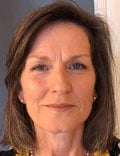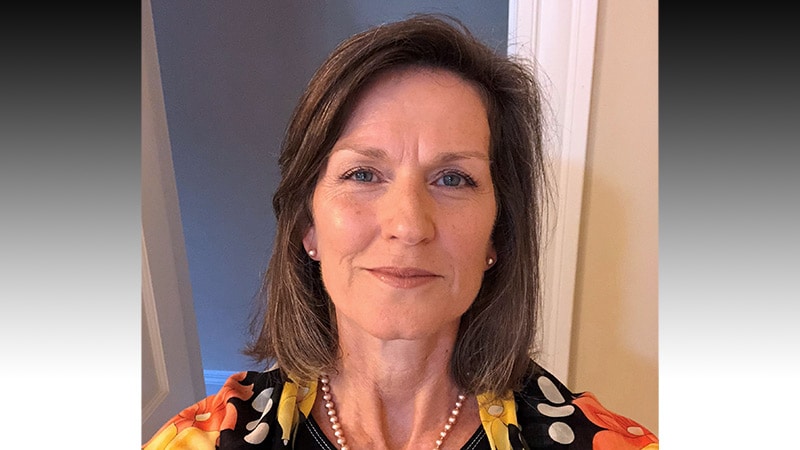The National Resident Matching Program (NRMP), which pairs medical graduates with compatible residencies, has often been criticized by students and health leaders regarding the effectiveness and equity of the match process.
The most recent controversy arose when NRMP nixed a proposal for a 2-day match process after 3 months of feedback from the public, medical students, and educators, 60% of whom approved of the proposal.
At the time, students questioned why the organization that oversees Match Day is run by a nurse who they believe couldn’t possibly understand the plight of medical graduates.

Dr Donna Lamb
Medscape Medical News recently sat down with that nurse ― Donna Lamb, DHSc, MBA, BSN, NRMP’s president and CEO ― ahead of this year’s Match Day, on March 17, to learn more about her work for the organization that helps chart the path of future doctors.
This interview has been edited for length and clarity.
Medscape: How did you get started in nursing?
Lamb: I was a trauma intensive care, cardiovascular intensive care, and neonatal intensive care nurse for the majority of my hospital nursing career. When I started having kids, I decided that I needed to move into more of a 9 to 5 job. So I went to work specifically with an invasive cardiologist. I would round with him and write progress notes, orders. I worked in the cardiac cath lab with him, in the operating room.
That was a really great experience and really taught me a lot in terms of critical thinking, from the way a physician thinks and how they go through different diagnoses to get to the treatment of a patient. [Later] I got my master’s degree and then went back to the hospital in an administrative capacity, where I began to develop research divisions as well as running different departments in the hospital.
Medscape: Did you always want to be a nurse?
Lamb: I actually wanted to be a surgeon, but I grew up in a very poor family. In my early years, I grew up primarily with my grandparents. They kept telling me, ‘Look at Donna; she’s a cute little nurse.’ It just kind of stuck, that I was always going to be the nurse of the family. We were so poor that we couldn’t afford to send me to medical school. I enrolled in nursing school [dual enrollment in high school], and I ended up really enjoying being a nurse. And frankly, it’s been a really good career.
Medscape: You have a doctorate in health sciences. But how do you respond to the concerns that the organization making decisions about doctors’ futures is run by a nurse?
Lamb: It doesn’t take a physician to run an organization. I’m leading the day-to-day operations of the organization. But this organization is governed by a board of 19 individuals; 13 of those are physicians, and so there is physician leadership. There are deans, vice deans, medical student advisors, program directors. There are faculty members. We also have medical students, residents, and fellows on the board.
Medscape: Do you believe a nurse brings certain skills to this position?
Lamb: I don’t think that you can lead an organization that provides a service to physicians without understanding how physicians work and what their priorities are in their workplace and in their training.
My nursing background has provided that to me and also my background working at the Accreditation Council for Graduate Medical Education as an executive director for surgery, plastic surgery and thoracic surgery. I bring all of that together to understand what it is that physicians are facing as they’re going through the transition to residency and what they need in their residency programs and beyond.
Medscape: You became CEO in late 2019, right before the pandemic dramatically changed medical education and training. What was it like navigating NRMP through that unstable period?
Lamb: It was certainly challenging on many levels. I had not had an opportunity to fully understand the annual cycle of the Match. We were already in ‘the cloud,’ but there were still issues pertaining to how we could safely and efficiently manage the transition of people to the remote environment; how we could ensure a high level of support to our stakeholders who had just gone through the match; and how we could ensure that we continued to work as a cohesive and efficient team.
There were calls to abolish the Match for the year and just let people find training. There were calls to retain students in place, so they could support the clinical needs of their home medical school/institution. We worked with the ECFMG [Educational Commission for Foreign Medical Graduates] and State Department to ensure they knew where all of the matched applicants were, facilitating the processing of immigration needs, and we worked with individual applicants and programs to support the binding commitment or, where necessary, to provide deferrals and waivers to those who were unable to attend their training.
Medscape: You just went through the latest effort to improve the Match Day process, making it less stressful for students and simplifying the transition period. After hearing from the public, you decided that the disadvantages of the proposed two-step process outweighed the benefits. What now or next for Match Day? Will there be more reforms in the future?
Lamb: That proposal, although it was not adopted in its current form, has not died. We are going to continue to look at what’s good in that proposal that we can use and that we can potentially innovate on further to improve the process. Are there timeline changes? Are there process changes that we can apply or anything to help reduce the stress and the pressure that applicants are feeling during that time?
We’ve also been asked to look at whether or not we would be willing to wrap some policies around the interview period. We’re going to look at how we create more transparency from programs [revealing] exactly what they are looking for, how are students and other applicants supposed to know whether or not they’re eligible for a program or whether they’re the type of applicant a program is looking for? And then, where we see community buy-in and where we see a benefit to applicants and programs, we will implement those changes.
Medscape: The Association of American Medical Colleges recently announced an increase in diversity and a rise in the number of applicants to medical school.
Lamb: I’m thrilled to see that diversity is going up; it’s about time, although it can’t possibly be anywhere close to what it should be. I mean, if you look at the cohorts of applicants who are underrepresented, they’ve remained flat for almost 10 years.
The number of applicants are going up with the approval of new medical schools and increasing numbers of positions for students in medical schools. We’re also seeing increases in the number of international medical graduate applicants. But at some point, the United States has got to take a look at the number of physicians it’s training or the number of medical students that are going through school vs the number of positions that are available to train those individuals and figure out what we do with that. We’ve got more students and more applicants than we have positions.
Medscape: We’ve reported about the difficulties of international medical graduates when it comes to the matching process, including trying to match more than once.
Lamb: With this increase in applicants, we’re going to continue to see incrementally higher numbers of individuals who don’t match. And there’s a number of reasons for that. Some of them are simply that they withdraw from the Match, but there are those who really want to be where a position is not available in the specialty they choose.
I think for international medical graduates there are some that have made three or four attempts to match. There are some specialties that have higher percentages of international medical graduates, and then there are others that have minimal to none, so much depends on the specialty they seek. International medical graduates are certainly very competitive. But they have historically between a 60% to 63% match rate, which is substantially below US graduates. That has been moderately flat for the last 5 years.
Medscape: What’s the solution?
Lamb: It’s a much larger question than just this 6 months’ recruitment period. And it’s really a result of how the medical profession and the medical community look at the cohorts of applicants that are applying to train in residency programs.
[With] every organization across physician certification, accreditation, licensing, and so forth we do have these conversations, and we do talk about how we address these concerns, how individuals eligible to train and who want to train in the United States might be able to do so.
Roni Robbins is an editor/writer for Medscape Business of Medicine. She’s been published in WebMD, HuffPost, Forbes, NY Daily News, BioPharma Dive, MNN, Adweek, Healthline, and others. She’s also the author of Hands of Gold: One Man’s Quest to Find the Silver Lining in Misfortune, www.ronirobbins.com.
For more news, follow Medscape on Facebook, Twitter, Instagram, and YouTube.
Source: Read Full Article






